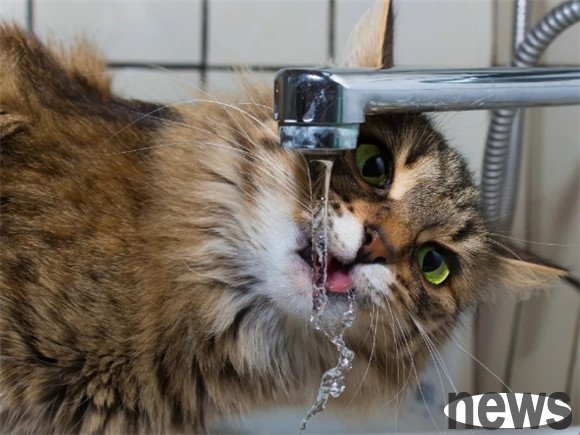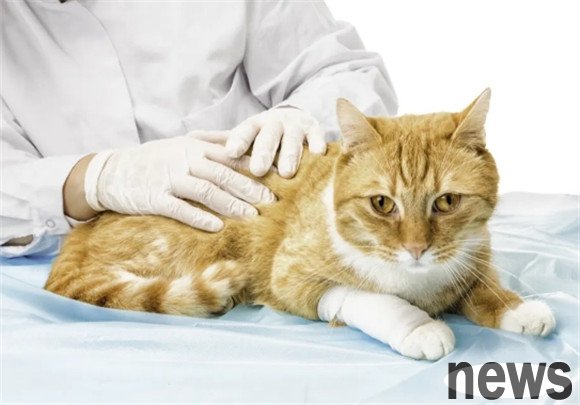The cat's ancestors lived in the desert and did not have a strong demand for water.
Several thousands of years have passed, cats have gradually become domestic pets, and their daily diet has changed from predation in the wild to pet dry food. Changes in lifestyle have driven their demand for drinking water to increase.
Some people may say that it’s okay if my cat doesn’t drink much water, but it’s not!
In fact, 70% of the cat's body is composed of water, and if you lose 10% of your body weight, you may face death.
Long-term insufficient water consumption can also cause urinary system diseases and chronic kidney disease! But the problem is that lack of water in cats is a chronic process and it is difficult for pet owners to detect it.
Today I will teach you a few small ways to determine whether the cats at home are chronically dehydrated.
1: Signs of water deficiency
First, we must learn to observe the daily behavior and physical condition of cats. Cats with water deficiency may experience the following symptoms:
Enhanced thirst: Cats may frequently look for water sources.
Reduced urine output: The amount of urine in cats may be significantly reduced due to the body's attempt to retain moisture.
Lowness: Water deficiency may make cats feel tired and powerless, and they may prefer to lie in a quiet place to rest.
Downturned appetite: Cats may experience loss of appetite due to physical discomfort.
Depending on the feces status: the stool is dry and hard, and one by one, it means lack of water.
2: Bladder stones - "stones" caused by water deficiency
Formation mechanism:
When the cat consumes insufficient water, the urine will become concentrated, and the minerals (such as calcium, phosphorus, magnesium, etc.) are more likely to be deposited to form crystals. These crystals gather in the bladder and gradually grow into stones.
Symptoms:
Cats may frequently urinate, have difficulty urinating, and even have hematuria. The pain may cause the cat to scream or avoid while urinating.
In severe cases, stones may clog the urethra and cause urinary retention, which is an emergency and requires immediate medical attention.
3: Renal edema - "water bag" caused by insufficient water
Formation mechanism:
The kidney is an important organ to maintain the balance of water in the body. When water is deficient, the kidney will try to retain more water, resulting in edema in the kidney tissue. Long-term water deficiency may also lead to a decrease in kidney function, further aggravating edema.
Symptoms:
-The cat may experience swelling in the abdomen and feel soft when touched.
-Symptoms such as dyspnea, mental depression, and decreased appetite may also occur.
-In severe cases, renal edema may lead to renal failure and life-threatening.
IV: Prevention and response measures
1. Provide adequate clean water sources:
Ensure that cats can drink clean water freely at any time, and can place multiple water bowls or use automatic drinking water maker.
Clean the water bowl regularly to keep the water quality clean.

2. Encourage cats to drink more water:
provide wet food, such as canned food or wet cat food, to increase their moisture intake.
In hot weather, cats can be provided with some flowing water sources, such as using fountain-style drinking water, which increases their fun in flowing water and promotes drinking more.
3. Pay attention to the diet of cats:
Provide high-quality cat food to ensure balanced nutrition and avoid feeding high-salt or high-protein foods that may increase the burden on the kidneys and increase the risk of stones.
4. Regular physical examinations:
Take the cat to the hospital for a health check regularly to understand its physical condition and possible health problems. Veterinarians can use urine analysis and X-ray to evaluate whether the cat has a risk of bladder stones or renal edema.

5. Timely discovery and handling:
If the cat is found to have any abnormal symptoms, such as frequent urination, difficulty in urination, abdominal swelling, etc., the cat should be taken to the hospital immediately. The veterinarian can determine the cause through examination and diagnosis and provide corresponding treatment.
The problem of water shortage in cats cannot be ignored. Parents must pay more attention to it, so that cats can have a healthy and happy living environment, learn more pet-raising knowledge every day, and prevent problems before they happen.